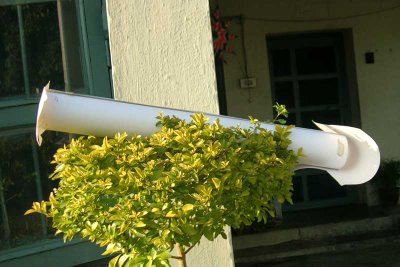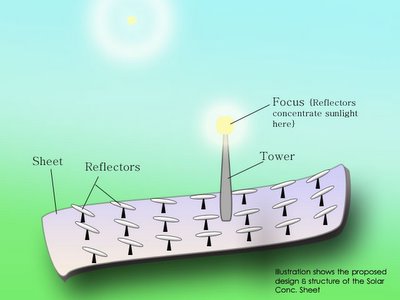Today, an idea developed into my mind while reading a physics chapter. Its about energy storage in the sea, to be used with the Offshore Solar {earlier post} project.
Its a quite intuitive idea. You might have observed a phenomenon while playing with water { I do it daily}, that when you try to put an inverted mug into bucket full of water, you have to push it downwards into water and it bounces back when let free.
While pushing it, you are actually trying to oppose a force applied by water from downwards. This force is called buoyant force {discovered by Archimedes}.
Now, I'm trying to visualize a similar thing, for sea.
Imagine a large and heavy hollow tower with closed top {say, a giant pipe with closed end}. Immerse this tower into sea water so that water goes inside and fills it up enough so that it floats. Lets call it "Energy tower"
This tower is now closed from the bottom too, so that water stays inside. Valves are used for opening and closing on both ends.
Imagine that we're generating huge amount of energy from the Solar Rig. To store some energy for night use we'll use a fraction of energy generated during the day to Pump out water from the Energy tower. As water is pumped out of the tower, it rises, due to buoyant force, just like a balloon rises in water, when inflated.
But, its huge weight tries to keep it down and so a very high water pressure starts to build outside the Energy Tower.
As Evening sets in, power production from the Solar Rig ceases and now, our Energy Tower comes to life.
All air and water valves are let open, and instantly, Water gushes in, with huge force.
Simply, place a water turbine at this end to produce power from the gushing water, just like turbines used in Hydro Projects {Dam}.
This I think, is an easy way to store energy at sea and it has virtually unlimited capacity.
I guess it'll work great with Solar Rigs
What do you Say? Tell us by clicking on "comments" below. I wanted to put some pictures here, but couldn't, due to lack of time. I'm preparing for college entrance tests these days.
Also, I've developed a Flash based "Easy read" feature to be used with text based sites like blogs, so that users can easily read text on screen. It's partially developed and it'll take some more time, due to my tests.
 as I have to delve into some nice big books to study integration and electromagnetic waves.
as I have to delve into some nice big books to study integration and electromagnetic waves.
 and the apparatus;
and the apparatus;









